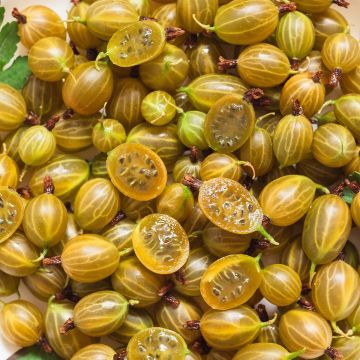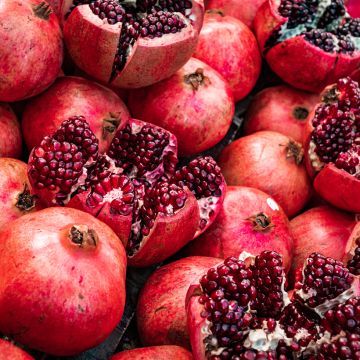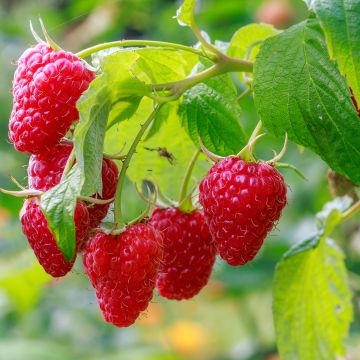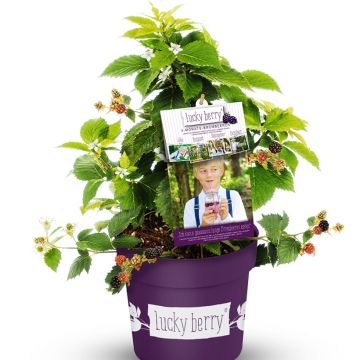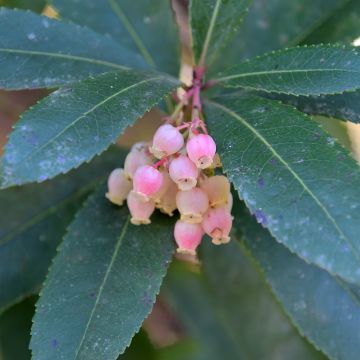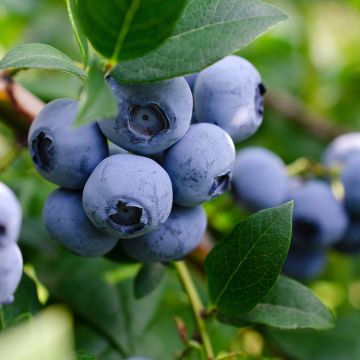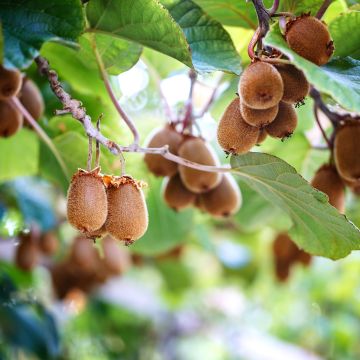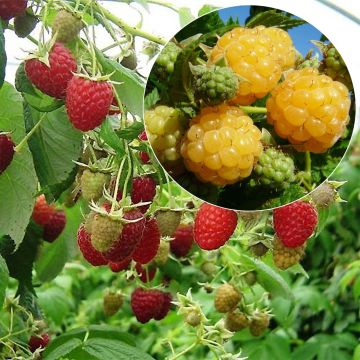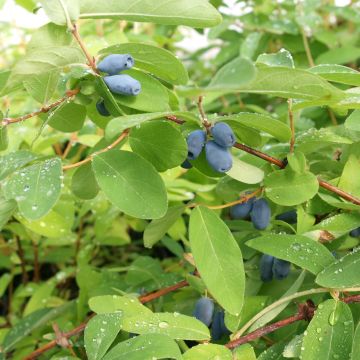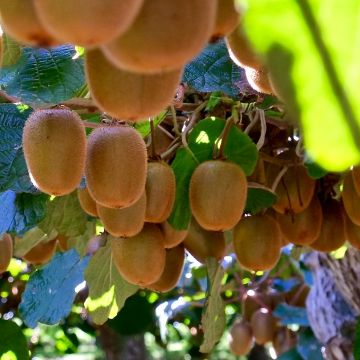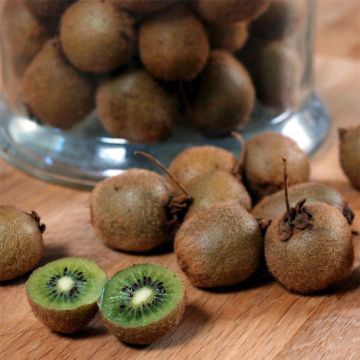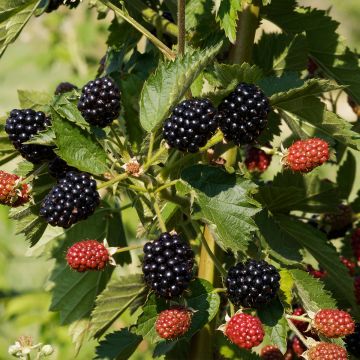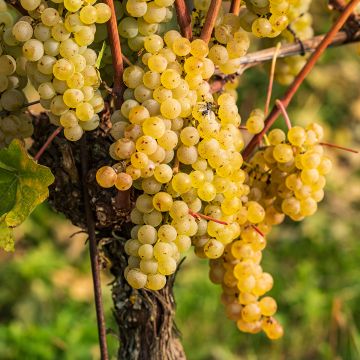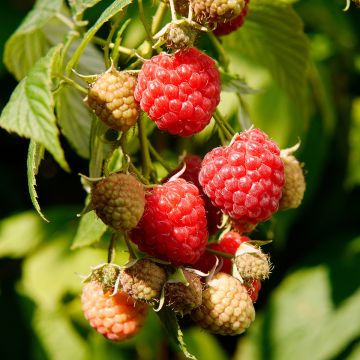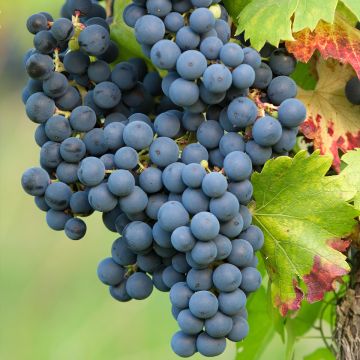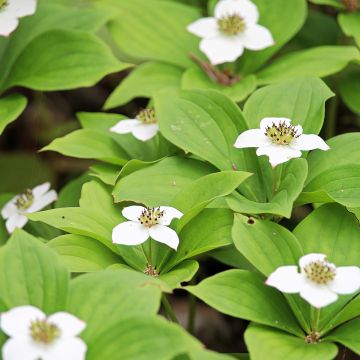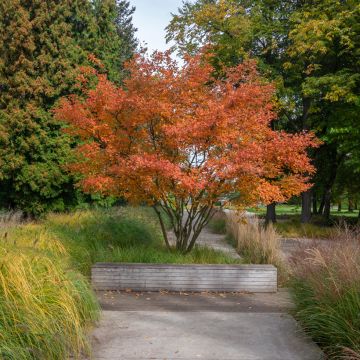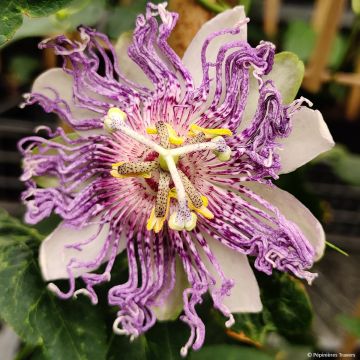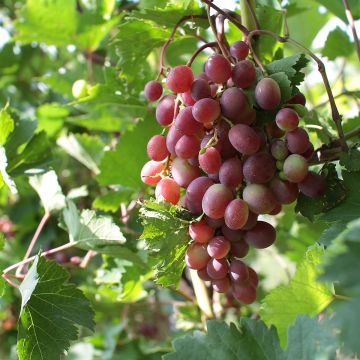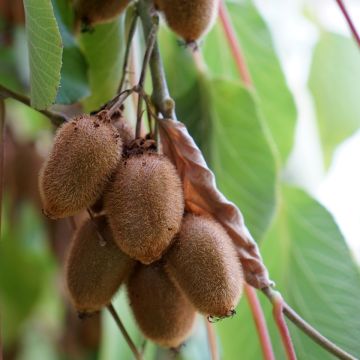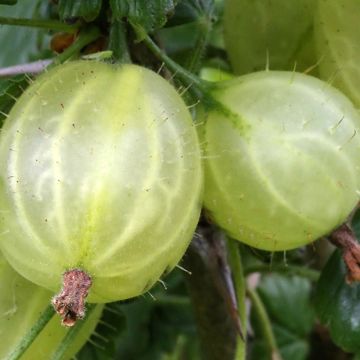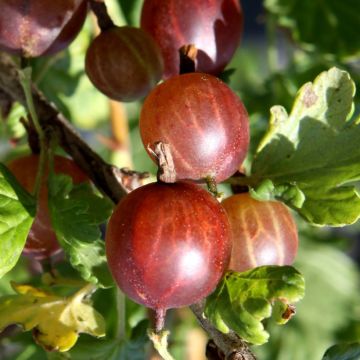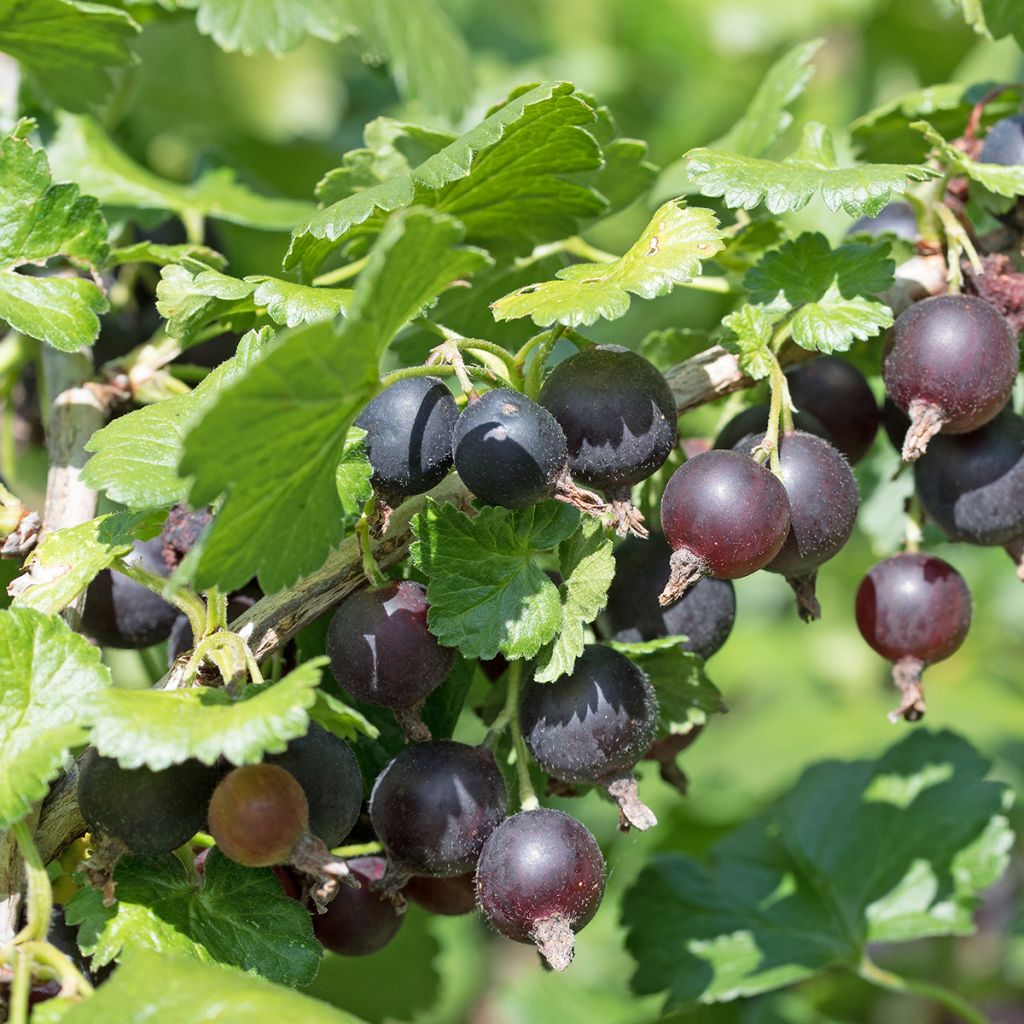

Jostaberry ConfiBerry Jogusto
Jostaberry ConfiBerry Jogusto
Ribes x nidigrolaria Confi®Beere Jogusto®
Jostaberry
Special offer!
Receive a €20 voucher for any order over €90 (excluding delivery costs, credit notes, and plastic-free options)!
1- Add your favorite plants to your cart.
2- Once you have reached €90, confirm your order (you can even choose the delivery date!).
3- As soon as your order is shipped, you will receive an email containing your voucher code, valid for 3 months (90 days).
Your voucher is unique and can only be used once, for any order with a minimum value of €20, excluding delivery costs.
Can be combined with other current offers, non-divisible and non-refundable.
Why not try an alternative variety in stock?
View all →This plant carries a 6 months recovery warranty
More information
We guarantee the quality of our plants for a full growing cycle, and will replace at our expense any plant that fails to recover under normal climatic and planting conditions.
Description
The Confi®Berry Jogusto® blackcurrant bush is a recent variety selected for its large berries resembling blackcurrants, with black skin and a texture similar to a gooseberry. They are harvested in early August. It has a generous yield. Its fruits are perfect for making jam, jellies, sorbets, or pies. A little taller (1.80 m (6ft)) than the other varieties in the Confi®Berry range, this Jogusto blackcurrant bush will find its place in the orchard or in a fruit hedge. Plant it in sunny, deep soil that remains moist.
From the Grossulariaceae family, Ribes x nidigrolaria is the result of cross-breeding between a blackcurrant and a closely related species of gooseberry. 'Jogusto' is a recent variety from the Confi®Berry range, selected for its generous yield and large fruits. It is a thornless bush with arching branches, reaching a height of 1.80m (6ft). It is the tallest in the range. Its three-lobed leaves are slightly toothed, green, and deciduous, absent in winter. In April, clusters of small red flowers appear, followed by large berries resembling blackcurrants, reaching a diameter of 1.8cm (1in) .
Self-fertile, the 'Jogusto' blackcurrant bush bears abundant fruit on its own. Its fruits are ripe in early August, and are preferably used for processing into jam or jelly. They can also be used in pies or compote. Generally, the fruits do not all ripen at the same time. It is necessary to wait until the red fruits turn black to ensure they are fully ripe. You can either harvest them as they ripen and freeze them to cook all at once, or wait until two-thirds are ripe and harvest them all. Less ripe fruits are richer in pectin, which helps with the setting of your jellies and jams.
The Jogusto blackcurrant bush is ideal for creating a fruiting country hedge. Pair it with 'Smokey' serviceberry bushes with their blue-tinged berries and male cornel dogwoods with their red, edible fruits.
It will also find its place in the orchard with white-fruited gooseberries 'Versaillaise Blanche' and redcurrants 'Junifer'.
Report an error about the product description
Jostaberry ConfiBerry Jogusto in pictures
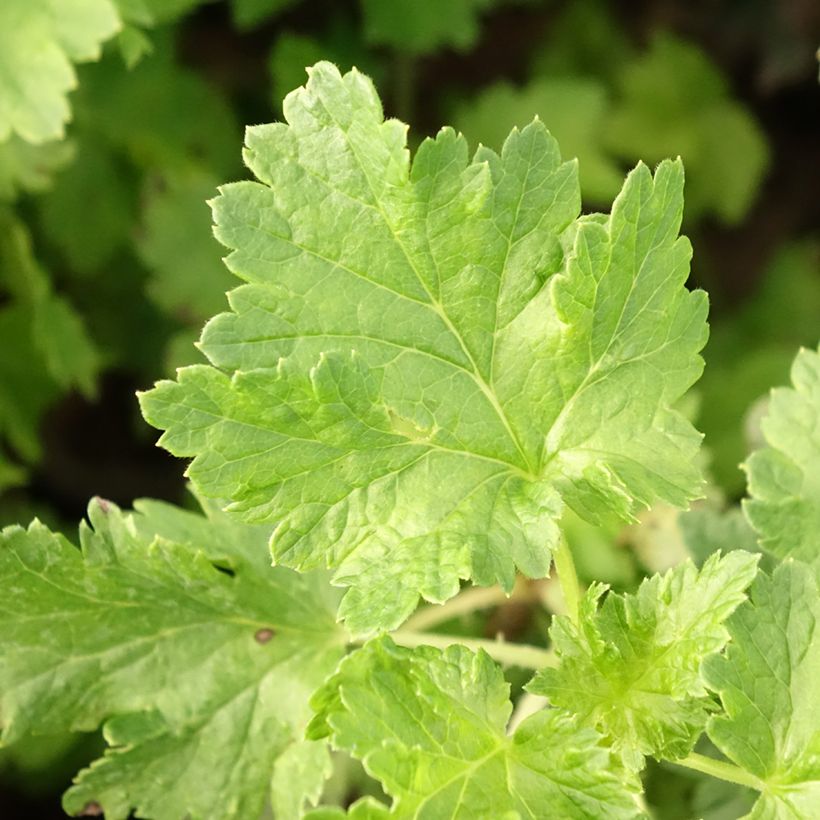

Plant habit
Fruit
Flowering
Foliage
Botanical data
Ribes
x nidigrolaria
Confi®Beere Jogusto®
Grossulariaceae
Jostaberry
Cultivar or hybrid
Other Berries A to Z
View all →Planting and care
Plant the Jogusto® currant bush in full sun or partial shade (in warm climates) to obtain beautiful harvests. It can tolerate ordinary, deep, and slightly clayey soil. Prefer a well-drained and moist soil (not too dry, but without stagnant moisture) without excessive limestone.
Space your gooseberry bushes about 1.2m (4ft) apart in all directions, except for in a fruit hedge; in this case, you can reduce the distance between two plants to 80cm (32in).
In spring, add well-decomposed compost by gently incorporating it (their roots are shallow) and mulch the base of your bushes to retain soil moisture. It is a hardy bush and not very susceptible to diseases.
Birds are fond of its berries, so plan to install a net as early as June to ensure a good harvest.
Planting period
Intended location
Care
This item has not been reviewed yet - be the first to leave a review about it.
Similar products
Haven't found what you were looking for?
Hardiness is the lowest winter temperature a plant can endure without suffering serious damage or even dying. However, hardiness is affected by location (a sheltered area, such as a patio), protection (winter cover) and soil type (hardiness is improved by well-drained soil).

Photo Sharing Terms & Conditions
In order to encourage gardeners to interact and share their experiences, Promesse de fleurs offers various media enabling content to be uploaded onto its Site - in particular via the ‘Photo sharing’ module.
The User agrees to refrain from:
- Posting any content that is illegal, prejudicial, insulting, racist, inciteful to hatred, revisionist, contrary to public decency, that infringes on privacy or on the privacy rights of third parties, in particular the publicity rights of persons and goods, intellectual property rights, or the right to privacy.
- Submitting content on behalf of a third party;
- Impersonate the identity of a third party and/or publish any personal information about a third party;
In general, the User undertakes to refrain from any unethical behaviour.
All Content (in particular text, comments, files, images, photos, videos, creative works, etc.), which may be subject to property or intellectual property rights, image or other private rights, shall remain the property of the User, subject to the limited rights granted by the terms of the licence granted by Promesse de fleurs as stated below. Users are at liberty to publish or not to publish such Content on the Site, notably via the ‘Photo Sharing’ facility, and accept that this Content shall be made public and freely accessible, notably on the Internet.
Users further acknowledge, undertake to have ,and guarantee that they hold all necessary rights and permissions to publish such material on the Site, in particular with regard to the legislation in force pertaining to any privacy, property, intellectual property, image, or contractual rights, or rights of any other nature. By publishing such Content on the Site, Users acknowledge accepting full liability as publishers of the Content within the meaning of the law, and grant Promesse de fleurs, free of charge, an inclusive, worldwide licence for the said Content for the entire duration of its publication, including all reproduction, representation, up/downloading, displaying, performing, transmission, and storage rights.
Users also grant permission for their name to be linked to the Content and accept that this link may not always be made available.
By engaging in posting material, Users consent to their Content becoming automatically accessible on the Internet, in particular on other sites and/or blogs and/or web pages of the Promesse de fleurs site, including in particular social pages and the Promesse de fleurs catalogue.
Users may secure the removal of entrusted content free of charge by issuing a simple request via our contact form.
The flowering period indicated on our website applies to countries and regions located in USDA zone 8 (France, the United Kingdom, Ireland, the Netherlands, etc.)
It will vary according to where you live:
- In zones 9 to 10 (Italy, Spain, Greece, etc.), flowering will occur about 2 to 4 weeks earlier.
- In zones 6 to 7 (Germany, Poland, Slovenia, and lower mountainous regions), flowering will be delayed by 2 to 3 weeks.
- In zone 5 (Central Europe, Scandinavia), blooming will be delayed by 3 to 5 weeks.
In temperate climates, pruning of spring-flowering shrubs (forsythia, spireas, etc.) should be done just after flowering.
Pruning of summer-flowering shrubs (Indian Lilac, Perovskia, etc.) can be done in winter or spring.
In cold regions as well as with frost-sensitive plants, avoid pruning too early when severe frosts may still occur.
The planting period indicated on our website applies to countries and regions located in USDA zone 8 (France, United Kingdom, Ireland, Netherlands).
It will vary according to where you live:
- In Mediterranean zones (Marseille, Madrid, Milan, etc.), autumn and winter are the best planting periods.
- In continental zones (Strasbourg, Munich, Vienna, etc.), delay planting by 2 to 3 weeks in spring and bring it forward by 2 to 4 weeks in autumn.
- In mountainous regions (the Alps, Pyrenees, Carpathians, etc.), it is best to plant in late spring (May-June) or late summer (August-September).
The harvesting period indicated on our website applies to countries and regions in USDA zone 8 (France, England, Ireland, the Netherlands).
In colder areas (Scandinavia, Poland, Austria...) fruit and vegetable harvests are likely to be delayed by 3-4 weeks.
In warmer areas (Italy, Spain, Greece, etc.), harvesting will probably take place earlier, depending on weather conditions.
The sowing periods indicated on our website apply to countries and regions within USDA Zone 8 (France, UK, Ireland, Netherlands).
In colder areas (Scandinavia, Poland, Austria...), delay any outdoor sowing by 3-4 weeks, or sow under glass.
In warmer climes (Italy, Spain, Greece, etc.), bring outdoor sowing forward by a few weeks.































